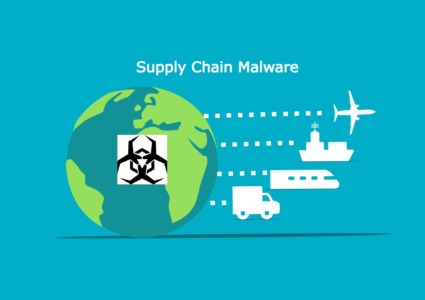What is DLL Hijacking? How Malware Exploits DLL Files on Windows
DLL hijacking is a type of cyber-attack that exploits a vulnerability in the way Windows loads dynamic link libraries (DLLs). It has become a serious threat to the security of Windows-based PCs that allows hackers to gain unauthorized access, execute malicious code, and escalate privileges on a compromised system to damage it further.

What is A DLL file?
A DLL is a special type of file used by Windows to store shared code and data that can be used by multiple applications. Both native Windows programs and third-party software rely on them to function properly.
However, if your computer is infected with malware or viruses, these can hijack DLLs and then gain quick access to the Windows processes and other software that relies on them.
How does DLL hijacking work?
DLL hijacking is sometimes known as DLL side-loading or DLL planting.
During an attack, a legitimate DLL file is replaced with a malicious one, or the attacker creates a fake DLL with a name that is similar to a real one. It is then placed in the System32 folder and other locations where programs would normally look for DLLs to load.
When the program is opened, it unknowingly loads the malicious DLL instead of the intended one, allowing the attacker to execute arbitrary code with the privileges of the compromised application or even escalate privileges to gain unauthorized access to the system.
The attack can be initiated by exploiting vulnerabilities in the search and loading order of DLLs in Windows, which may prioritize loading DLLs from specific directories or search paths before checking for the legitimacy of the DLL itself.
DLL hijacking attacks can be stealthy, difficult to detect, and can potentially result in serious consequences such as unauthorized access, data theft, and system compromise.
How do I prevent DLL hijacking?
The best way to stop DLL hijacking in its tracks is to use a reputable antivirus program with real-time protection. This will detect any incoming threats or irregularities before they harm your computer.
However, you must also be wary about opening links in emails from senders you don’t recognize and downloading files from unknown sources.
- Never download DLL files from websites that don’t have any positive reviews.
One of the most common errors on Windows is missing DLLs. Users think nothing of Googling the missing DLL and replacing it manually. However, this is one route DLL hijacking can happen. The DLL you download turns out to be fake and then infects the system.
What’s worse, it’s often malware and viruses that delete the original DLLs in the first place.
How do I remove hijacked DLLs?
Once DLL hijacking takes hold, you must scan your system for malware and viruses using the built-in Windows virus and threat protection tool. It’s then also a good idea to use a secondary antivirus like Norton or Avira.
For the best results, go to Settings, choose Update & Security, then click on Windows Security and select Virus & threat protection.
Then, under Scan options, choose Full Scan in case the malware is hiding somewhere less obvious on your computer.
How do I replace missing and damaged DLLs?
Unfortunately, most antivirus programs do not fully repair the system nor replace corrupted DLLs. This is when you should turn to Fortect, which finds and automatically replaces missing or damaged DLLs from its legitimate database of clean Windows files.
All you have to do is:
- Download and Install Fortect on your PC.
- Launch and accept the scan to find missing DLLs and other Windows problems.

- Click Start Repair to repair everything or Fix section to focus on DLLs only.
- Wait for the process to complete and restart your PC if prompted.
Most malware infections will damage the Windows Registry and other areas of your computer, so it’s best to let Fortect repair your full system.
Depending on the amount of damage, this can take between a few minutes and half an hour. It will also remove junk files and potentially malicious software that your antivirus may have missed.
Sophisticated malware is able to hijack DLL files that are shared by programs and software to quickly infect your system. Although an antivirus can remove the source of the problem, it takes a tool like Fortect to repair leftover damage to the registry and replace DLLs with legitimate copies easily.






